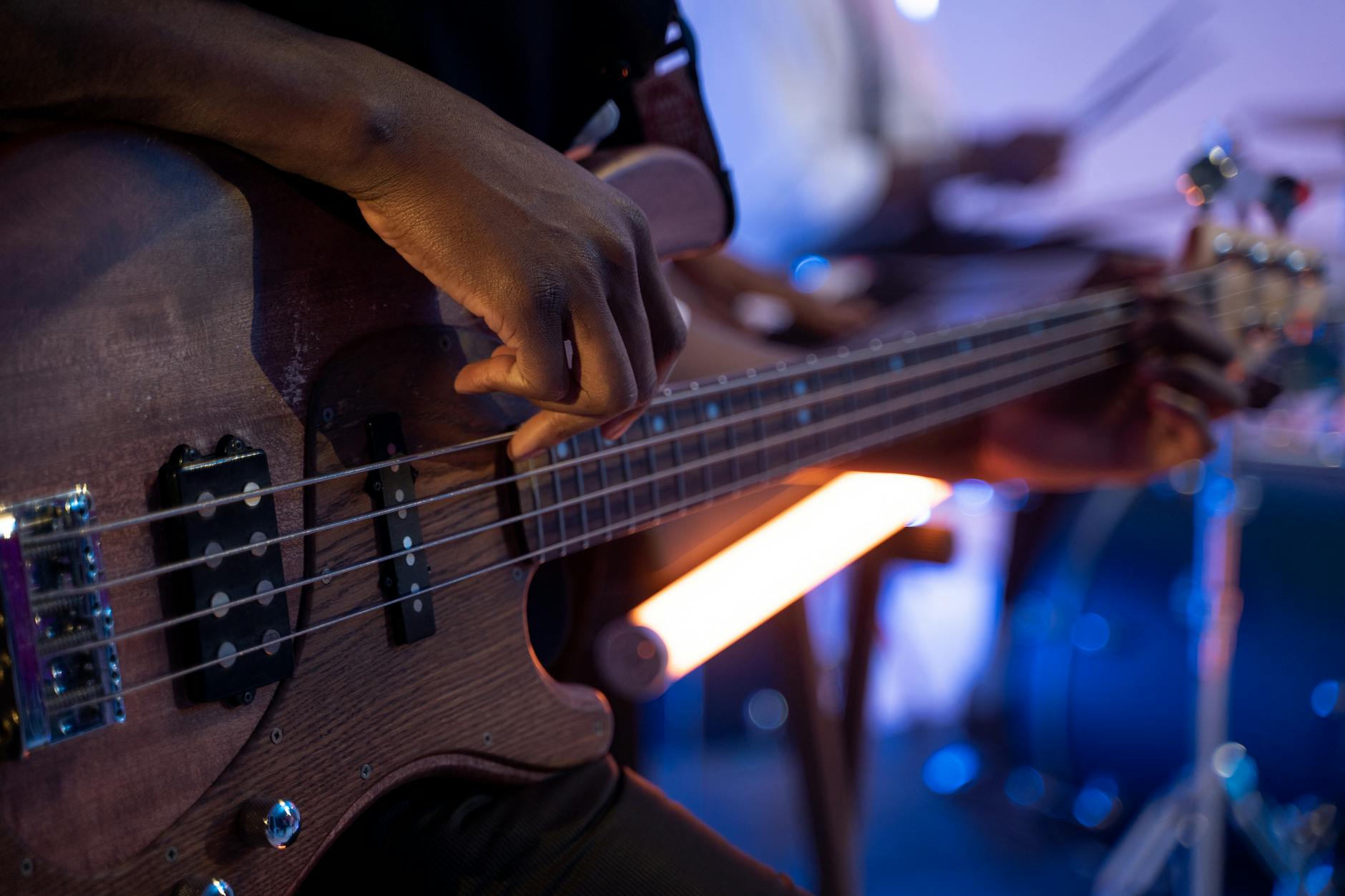How to Play Hide Away by Freddie King – Iconic Blues Instrumental Riff Tutorial
Master Hide Away Freddie King guitar tutorial—learn riffs, tabs, and pro-level groove. Perfect for intermediate blues players. Start your lesson now!

Ever wanted to nail the iconic blues instrumental riff that made Freddie King a legend? There’s a reason 'Hide Away' is a rite of passage for blues guitarists: it’s a masterclass in groove, phrasing, and pure blues vocabulary, all wrapped up in a single unforgettable instrumental. Most tutorials skip past the subtle details that set King’s version apart—the swing feel, those sliding double-stops, and the perfect balance of major and minor licks.
Here’s what actually helps you play it like the pros: break the tune into sections, pick up the real tabbed licks, and don’t ignore the dynamic groove that brings King’s riff to life. This step-by-step 'Hide Away Freddie King guitar tutorial' aims straight for those details, making it playable for any intermediate guitarist who wants to lock in the sound and spirit of this blues standard.
What You'll Learn:
- Get the right guitar, amp, and gear for Freddie King’s tone.
- Master key blues techniques: hammer-ons, pull-offs, double-stops, sliding E7 voicings.
- Learn the main Hide Away riff with note-for-note tab and phrasing tips.
- Break down the diminished chord and 'Peter Gunn' theme section for groove and accuracy.
- Fix common rhythm and phrasing challenges - no more rushed or sloppy riffs.
- Discover how to add personal style while keeping King’s authentic vibe.
What You Need to Play ‘Hide Away’ by Freddie King
Playing Freddie King’s 'Hide Away' right isn’t just about moving your fingers—it’s about capturing a signature sound that defined a whole era of blues. Here’s how to set yourself up:
Gear for the Job
- Guitar: A semi-hollow body (think Gibson ES-335 or a Les Paul with P90 pickups) is the go-to choice for an authentic King tone. A Strat, Tele, or any guitar with bite and clarity can work too.
- Amp: Go for a clean tube combo—Fender Twin Reverb or Blues Junior. Keep gain low (around 2–3), dial up treble slightly (6–7), mids at 6, bass around 4–5. No heavy distortion needed.
- Extras: Have a metronome handy for nailing the shuffle groove, and grab any accurate tab as a reference. A thumbpick and a metal fingerpick on the index finger can help mimic King’s fingerstyle attack.
Recommended Settings: Tone knob wide open; amp treble at 6–7; reverb barely on. King’s tone is clean, biting, but never harsh.
Skill Prerequisites: Intermediate Blues Techniques
It pays to have a few technical basics down before jumping into this tune. Intermediate blues players should be comfortable with:
- Hammer-ons and pull-offs for fluid, connected licks
- Slides—especially across double-stops and single-note lines
- Double-stops (two-note riffs played together, often on the G and B strings)
- Chord voicings—E7, A7, B7, and diminished grips on higher frets
- 12-bar blues format: E7 (4 bars), A7 (2), E7 (2), B7 (1), A7 (1), E7 (1), B7 (1)
Essential Blues Techniques for ‘Hide Away’
Freddie King’s style in 'Hide Away' blends:
- Hammer-ons and pull-offs that push the notes ahead of the beat, adding energy
- Smooth but snappy slides, especially those signature double-stop moves (9th to 7th frets, G & B strings)
- Classic E major and minor pentatonic licks—King mixes both flavors throughout
- Diminished chord breaks for color and movement
Set the stage right, and the rest is in your hands and your timing. This groundwork is what separates a passable run-through from something that turns heads. For a deeper breakdown of these technical building blocks, Fundamental-Changes' Freddie King lesson covers these key licks and voicings.
Step-by-Step ‘Hide Away’ Freddie King Guitar Tutorial
Mastering 'Hide Away' is all about learning in sections. Most players get overwhelmed trying to run through the song from start to finish. The trick is to take it measure by measure: break the song into digestible riffs, focus on authentic phrasing, and nail each section before moving on.
Intro and Main Riff Breakdown
The main ‘Hide Away’ riff is where the magic happens. Start in E major, shuffle feel, and use both open and fretted strings to mimic King’s punchy groove. Here’s the tab for the opening measure (E7):
|----------------------|---------------------| |-----7---5---7--------|-----5---4---5-------| |-----7---6---7--------|-----4---4---4-------| |--6-------------------|---------------------| |--7-------------------|--5------------------| |----------------------|---------------------|
Tips for this riff:
- Use your ring and pinky for the double-stops at the 7th fret—this keeps the hand relaxed for quick changes.
- Accent the first note of each bar for that driving swing.
- Let some notes ring for a touch of grit.
Try this: Practice the riff slowly with a metronome set at 90 bpm. Aim for crisp attack but let the swing guide the timing. Don’t rush the pull-offs—they’re meant to pop out, not smear together.
Diminished Chord Breaks and ‘Peter Gunn’ Theme
One iconic section uses a diminished shape—classic Freddie King. Here’s how it sounds in context:
|---7---8---9---10--| |---6---7---8---9---| |---7---8---9---10--| |-------------------| |-------------------| |-------------------|
Move the diminished chord up the neck in half-steps to build tension before returning to the E riff. For the ‘Peter Gunn’ theme, King adapts the classic riff into his blues framework, usually like this:
|---------------------| |---------------------| |---------------------| |--2-2-4-2-5-2--------| |--0-0-0-0-0-0--------| |---------------------|
Keep notes staccato for punch. Finger with index and ring fingers, muting excess string noise. For more on mixing themes into ‘Hide Away,’ see Wikipedia's historical breakdown.
Sliding Double-Stop Chord Technique
This is the signature lick—slide a double-stop from the 9th to the 7th fret on both the G and B strings. Don’t slide to the 8th fret—King nails that wide, bluesy jump every time:
|--------9/7----------| |--------9/7----------| |---------------------| |---------------------| |---------------------| |---------------------|
Tips:
- Start the slide on the beat. Make sure both notes are pressed down together.
- Use your ring and pinky or index and middle fingers—whatever feels stable. Mute unwanted strings with your palm.
- Palm muting helps keep things tight—don’t let strings ring uncontrolled.
This sliding lick repeats often, so practice it as a standalone exercise daily. There’s a full demonstration on TXBA’s sliding double-stop lesson.
Blending Major and Minor Licks in E
Freddie King’s genius is his mix of E major and E minor pentatonic ideas, often within the same measure. Here’s a common position:
E Major Pentatonic (Shape 1) |----------------------0-2--| |------------------0-2------| |-------------1-2-----------| |---------1-2---------------| |-----0-2-------------------| |--0-2----------------------|
Try alternating between this and the standard minor pentatonic box at the 12th fret. For instance:
- Play a lick from the major box, then answer with a minor box phrase.
- Use slides and hammer-ons between the boxes for flow.
- Watch out for phrasing—King often bends up to minor notes but resolves to major tones.
Play one measure at a time. Slow it down, focus on transitions, and let the groove build as you combine sections. That’s how King made ‘Hide Away’ sound effortless.
Troubleshooting: Common Challenges in ‘Hide Away’
Getting 'Hide Away' under your fingers comes with its share of stumbling blocks. Most intermediate players struggle with two things: locking in the groove and making the slides and chord breaks sound crisp instead of sloppy.
Fixing Stiff or Rushed Rhythm
The shuffle rhythm is everything. If the song feels stiff or rushed, slow things down. Set a metronome to 80–90 bpm. Focus on playing behind the beat, letting the swing carry each riff.
- Count out loud: “One-and, two-and, three-and, four-and.”
- Let upstrokes breathe—don’t tense the wrist.
- Record yourself playing along with a drum loop or backing track.
Practicing at slower tempos locks in timing before cranking up the speed. Small adjustment, huge effect.
Correcting Sloppy Slides and Chord Breaks
King’s precision with slides—especially the double-stops—makes or breaks the riff. Messy slides ruin the groove. Here’s the fix:
- Practice the slide from 9th to 7th fret (G and B strings) in isolation, landing in sync with the beat.
- Keep pressure even across both strings; don’t let one note fade or scrape.
- Use subtle right-hand palm muting to clean up extra noise.
For diminished chord transitions, take it slow. Move the shape up one fret at a time, hitting each chord cleanly, then speeding up once it feels smooth. Practicing each trouble spot as a standalone lick is a proven method—just as RockClass101’s sectional learning approach recommends.
Stylistic Nuance: Playing ‘Hide Away’ Like Freddie King
Technical precision means little if the style isn’t there. So what sets Freddie King’s version apart? It’s all in the touch, dynamics, and those expressive twists that make ‘Hide Away’ swing instead of stumble.
Dynamics and Picking Hand Techniques
- King used a thumbpick and metal fingerpick on his index. This combo helps deliver punchy accents and gives notes that classic snappy attack.
- Try varying your picking strength within a riff—soft for background, dig in for key notes. Let your palm rest lightly on the bridge for control.
- Mute unplayed strings with your picking hand. This keeps chord riffs and single notes distinct, not messy.
Muting and accenting make the difference between a flat run-through and something listeners groove to. For a detailed look at picking and muting, check Jon MacLennan’s fingerstyle analysis of ‘Hide Away.’
Adding Your Own Flavor
King didn’t just repeat other people’s riffs—he melded them into something new. The song weaves licks from earlier blues songs, like “Taylor’s Boogie” and “Peter Gunn,” creating a tapestry that’s uniquely his.
- Experiment by swapping in a minor pentatonic run for a major riff section.
- Improvise endings or transitions. Finish a riff early and launch into your own fill, returning to the main groove.
- Keep the shuffle rhythm alive even when improvising—don’t let riffs lose their swing pulse.
Best way to develop style: record yourself, listen, and tweak what works. Always circle back to the feel that makes King’s instrumental so enduring. Insights on King’s blend of riff sources and melodic approach can be found in Wikipedia’s background on the song.
Conclusion
'Hide Away' isn’t just a blues standard—it’s a live-wire showcase for style, groove, and the joy of classic riffing. Step-by-step practice, focused on small sections and authentic phrasing, takes the mystery out of King’s playing. Those sliding double-stops, swinging shuffle rhythms, and major/minor blends are the heart of ‘Hide Away’s’ sound.
Keep the metronome close, play with feel, and don’t be afraid to experiment once you’re comfortable. There’s endless room to personalize this instrumental, but the best results always start with nailing the basics King made famous. Move on to learning more Freddie King instrumentals, or try improvising over backing tracks using the same techniques.
Frequently Asked Questions
How do you play the riff to Hide Away by Freddie King?
To play the main 'Hide Away' riff, start in E major with a shuffle rhythm, using hammer-ons, pull-offs, and sliding double-stop chords (9th to 7th fret on G and B strings). Break the tune into sections, practice each measure slowly, and use muting to keep notes clean. Focus on groove and timing as you combine sections for the full piece.
What key is ‘Hide Away’ in?
'Hide Away' is played in the key of E major. The song features both E major and E minor pentatonic licks, following a classic 12-bar blues progression using E7, A7, and B7 chord shapes for structure.
Is Hide Away blues instrumental difficult to learn?
'Hide Away' is approachable for intermediate players but demands attention to technique and timing. The song’s main challenge comes from the shuffle groove, double-stop slides, and accurate transitions. Slow, section-by-section practice makes it manageable for most guitarists with solid blues fundamentals.
What techniques are needed to play Hide Away by Freddie King?
Key techniques for ‘Hide Away’ include hammer-ons, pull-offs, double-stop slides (especially on the G and B strings), diminished chord moves, and mixing major and minor pentatonic licks. Using palm muting, thumbpick, and fingerpicks creates an authentic Freddie King sound.
Key Takeaways
- Breaking ‘Hide Away’ into sections and learning each riff carefully unlocks authentic Freddie King phrasing.
- Gear and technique matter—semi-hollow guitars, clean tube amps, and fingerpicks deliver the classic tone.
- The key to mastering ‘Hide Away’ is attention to groove, dynamics, and mixing major/minor blues licks.
Related Topics
Explore more articles in these topics to deepen your knowledge.
Related Articles

How to Play Hide Away by Freddie King – Beginner Blues Guitar Tutorial
Master Hide Away Freddie King guitar tutorial with step-by-step tips, tabs, and play-along video for fast progress. Start playing blues now!

How to Play Ed Sheeran’s 'Perfect' on Guitar with Simple Chords
Learn how to play Perfect Ed Sheeran guitar with simple chord shapes and clear step-by-step rhythm tips. Perfect for beginners wanting real results fast.

How to Play Wonderwall on Guitar
Master how to play Wonderwall on guitar with clear chord diagrams, easy transitions, and simple strumming techniques for a smooth acoustic sound.
Discover more insights from our blog to enhance your musical journey.
